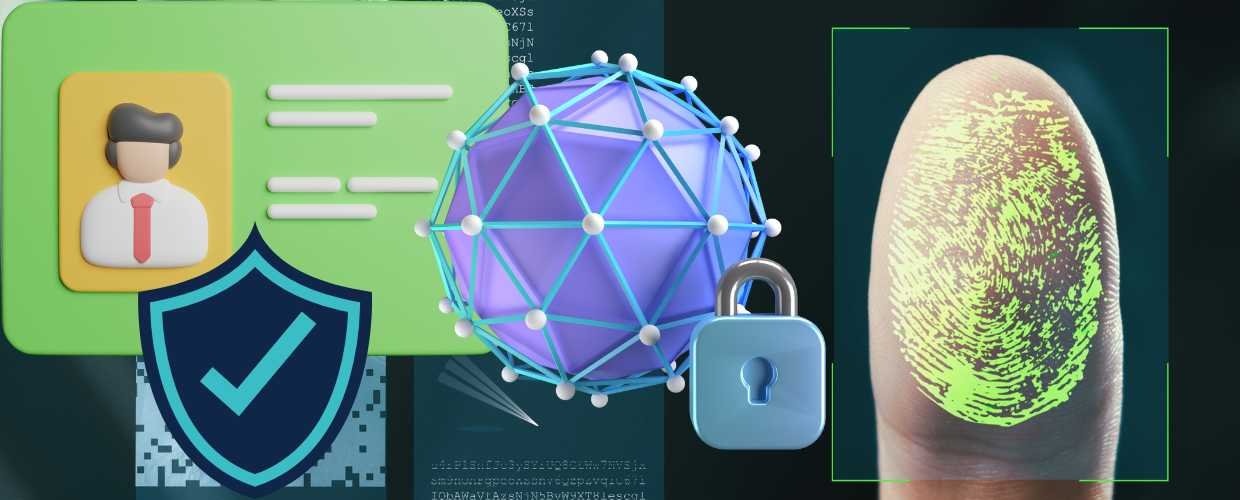In our increasingly digital world, protecting your digital identity is paramount. Your digital identity encompasses everything from your personal information and online accounts to your financial details and social media profiles. Cybercriminals are constantly seeking opportunities to exploit vulnerabilities, making cybersecurity essential.
Guide to Secure Digital Identity
This guide will explore practical ways to secure your digital identity and safeguard your online presence.
Create Strong, Unique Passwords
The foundation of digital security begins with robust passwords:
- Unique Passwords: For each online account, create a unique, complex password that includes a mix of uppercase and lowercase letters, numbers, and symbols.
- Password Manager: Use a password manager to securely generate, store, and autofill passwords. It reduces the risk of using the same password across multiple accounts.
Enable Multi-Factor Authentication (MFA)
MFA adds an extra layer of security to your accounts:
- Activate MFA: Enable MFA wherever possible, especially for critical accounts like email, banking, and social media. MFA requires an additional verification step beyond a password, such as a code sent to your phone.
- Biometric Authentication: If available, use biometric authentication methods like fingerprint or facial recognition for added security.
Keep Software and Devices Updated
Regularly updating your software and devices is vital for staying protected:
- Operating System Updates: Install operating system updates and security patches promptly. These updates often address known vulnerabilities.
- Software Updates: Keep all software, including browsers and applications, up to date. Cybercriminals frequently exploit outdated software.
Beware of Phishing Attempts
Phishing attacks are a common tactic used by cybercriminals:
- Email Vigilance: Be cautious when clicking links or downloading attachments from unsolicited emails. Verify the sender’s authenticity before taking any action.
- Check URLs: Double-check the URLs of websites you visit. Phishing sites may mimic legitimate websites to steal your credentials.
Secure Your Wi-Fi Network
Your home Wi-Fi network can be a point of vulnerability:
- Change Default Credentials: Change default router login credentials to unique and strong passwords. It prevents unauthorized access to your network settings.
- WPA3 Encryption: Use WPA3 encryption to secure your Wi-Fi network and regularly update your Wi-Fi password.
Regularly Back Up Your Data
Data loss can be devastating. Regular backups are your safety net:
- Automated Backups: Set up automatic backups for your devices, ensuring your data is regularly saved to a secure location, such as an external hard drive or cloud storage.
- Test Restores: Periodically test data restores to ensure your backup system functions correctly.
Educate Yourself About Cyber Threats
Knowledge is your best defense against cyber threats:
- Stay Informed: Keep yourself informed about the latest cybersecurity threats and best practices. Online resources and cybersecurity courses are readily available.
- Security Awareness: Educate yourself and your family about cyber threats, such as social engineering, ransomware, and identity theft.
Use Secure Networks and VPNs
When connecting to the internet, choose secure networks:
- Public Wi-Fi: Avoid using public Wi-Fi networks for sensitive tasks. Use a virtual private network (VPN) to encrypt your internet connection if necessary.
- VPN Usage: Consider using a reputable VPN service, especially when accessing the internet from public places. A VPN enhances your online privacy and security.
- Regularly Monitor Your Accounts
- Monitoring your online accounts can help detect unauthorized activity:
- Review Statements: Regularly review bank and credit card statements for unusual or unauthorized transactions.
- Account Alerts: Set up account alerts for any suspicious or high-value transactions. These alerts can help you respond quickly to potential threats.
Plan for Incidents
In the event of a security breach or identity theft:
- Response Plan: Develop a plan for responding to cybersecurity incidents. Know whom to contact and what steps to take if your digital identity is compromised.
- Reporting: Report cybercrimes and incidents to the appropriate authorities and organizations, such as your bank or credit card company.
Conclusion
Securing your digital identity is an ongoing process that requires vigilance and proactive measures. By following these step-by-step cybersecurity guides, you can significantly reduce the risks associated with cyber threats and protect your digital identity. Remember that cybersecurity is everyone’s responsibility, and staying informed and prepared is your best defense in our digitally connected world.





